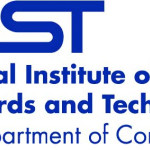- Branche: Technology
- Number of terms: 2742
- Number of blossaries: 0
- Company Profile:
The National Institute of Standards and Technology (NIST) — known between 1901 and 1988 as the National Bureau of Standards (NBS) — is a measurement standards laboratory and a non-regulatory agency of the United States Department of Commerce. The institute's official mission is to promote U.S. ...
An assignment of flow values to the edges of a flow network that satisfies flow conservation, skew symmetry, and capacity constraints.
Industry:Computer science
An asymptotic bound, as function of the size of the input, on the best (fastest, least amount of space used, etc.) an algorithm can possibly achieve to solve a problem. That is, no algorithm can use fewer resources than the bound.
Industry:Computer science
An asymptotic bound, as function of the size of the input, on the worst (slowest, most amount of space used, etc.) an algorithm will do to solve a problem. That is, no input will cause the algorithm to use more resources than the bound.
Industry:Computer science
An auxiliary data structure added to a main data structure to improve operations, such as a search on a secondary key.
Industry:Computer science
An edge in a flow network which has the maximum possible flow.
Industry:Computer science
An edge of a connected graph whose removal would make the graph unconnected.
Industry:Computer science
An efficient 3-pass refinement of a bucket sort algorithm. The first pass counts the number of items for each bucket in an auxiliary array, and then makes a running total so each auxiliary entry is the number of preceding items. The second pass puts each item in its proper bucket according to the auxiliary entry for the key of that item. The last pass sorts each bucket.
Industry:Computer science
